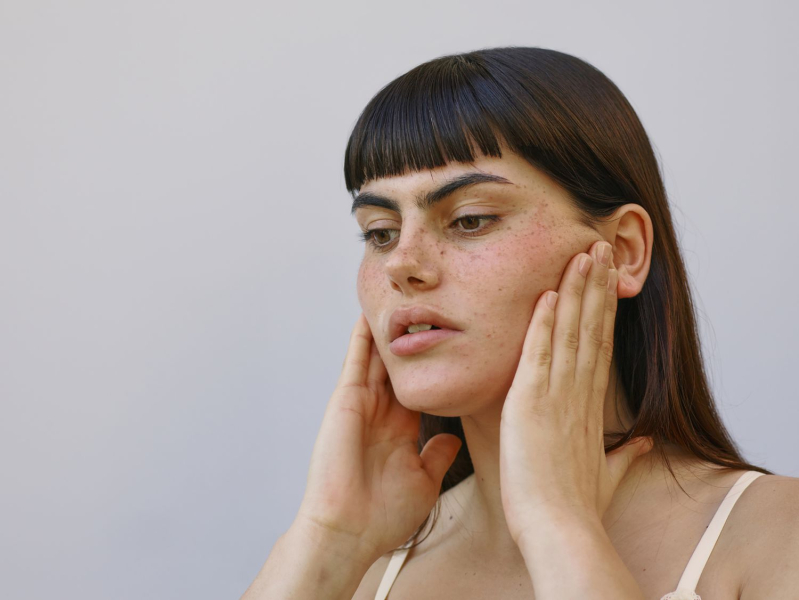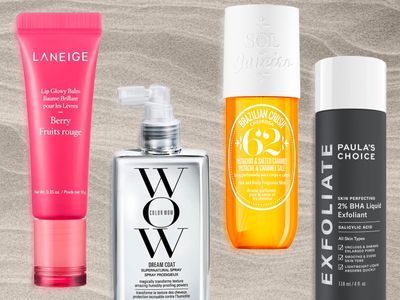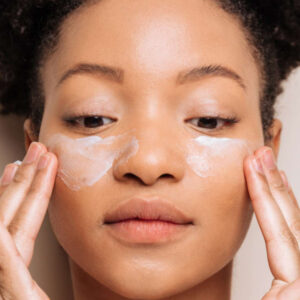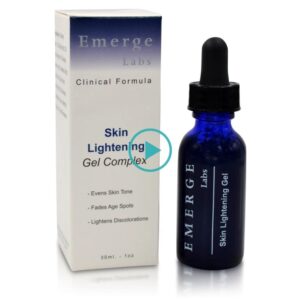
Treatments Prevention The Final Takeaway
With the uptick in patients getting facial fillers in recent years, it’s no surprise that we’ve also seen an uptick in “bad” filler—horror stories about overfilled areas on the face or filler migration (which can often be one and the same). And just like any other topic that goes viral on social media, filler migration has spread to the rest of the internet.
But is it as common as the 83 million posts on TikTok claim? In short, no. That said, filler migration is always a possibility, so we asked board-certified plastic surgeon Jeffrey G. Lind II, MD, and board-certified nurse practitioner Vanessa Coppola, APN-C, FNP-BC, to discuss how to identify and problem-solve the issue, should it happen to you. Read on for a complete breakdown of filler migration.
What Is Filler Migration?
“Filler migration is when dermal fillers, typically used in the lips and cheeks as well as other areas of the face, migrate or move from the intended injection site,” sums up Lind.
While many FDA-approved fillers work on gel formulas specifically designed not to move, outside factors can get in the way.
How Can You Tell Filler Has Migrated?
Pending the severity of filler migration, it can be clear as day to the naked eye. The most obvious case is typically lips. “We most commonly see this in the perioral area, which is the area around the lip,” says Coppola. The filler will migrate from the red body of the lip into the surrounding area, she explains. “You can sometimes see this by the protuberance of the lip from the profile, the loss of definition to the vermillion border, and sometimes… a whiteish cast to the skin where the filler has migrated.”
Identifying filler migration in other areas of the face can be more complicated—as Coppola explains, it’s a subtle art. “In the tear trough area, for example, this can sometimes result where filler has migrated to the surface of the skin, and it looks almost like a tootsie roll, which is an area of discontinuity of fullness under the eyes where it is not contiguous from the lower lid to cheek junction,” she explains.
All that said, it's important to make an appointment with a skilled provider to identify if your filler has, in fact, shifted before jumping to any conclusions, both experts note.
What Causes It?
There are multiple different factors—some natural and some not—that can lead to filler migration.
- Overfilling: For starters, the experts note that overfilling an area of the face can lead to filler migration; generally, technical errors are often the root of migration issues. To avoid this, always work with a board-certified injector experienced in the field.
- Injection at the wrong depth: In that same breath, injecting filler at the wrong depth can also lead to migration. “A very detailed and intimate understanding of facial anatomy… is necessary to avoid adverse events such as filler migration, which is aesthetically displeasing,” explains Coppola. “If you inject filler in an area of high muscle activity superficially, this can also cause the filler to migrate to the surface of the skin. We commonly see this both in the tear trough area [and] in the lips.”
With all that said, it should also be noted that migration can occur due to something as simple as repeated muscle movement or getting filler too often. The experts note that layering filler in the same area repeatedly over time can lead to issues, as well as the type of filler used and the innate anatomical nuances of that individual.
How Can It Be Treated?
If you’ve identified filler migration and aren’t sure what step comes next, don’t fret. You have options—the first being to do nothing. If the migration isn’t cosmetically unappealing or physically uncomfortable, you can simply wait it out. Hyaluronic acid fillers typically dissolve in six months (some closer to a year).
The second option for someone looking for an immediate fix is to dissolve the filler. "[Assuming it is a hyaluronic acid-based filler], an injector can dissolve the filler with an injectable medication called hyaluronidase," explains Lind. "However, this may require several sessions."
It should be noted that dissolving filler can be an uncomfortable process, depending on your pain tolerance. As someone who once had to dissolve chin filler, I can personally attest that the feeling was not ideal and would describe it as a sharp, burning sensation. That being said, it was, without a doubt, worth it for the quick fix.
Can It Be Prevented?
Yes and no. There are best practices to follow that will help lead a patient to the ideal filler outcome. “You should always have your injections performed by an experienced injector,” Lind emphasizes. “The injector should avoid placing too much filler in one location, as this can potentially spill over into adjacent areas—the second most likely explanation for ‘filler migration,’ with the first being poor filler placement by the injector, to begin with. The injector must also use the right filler for the right indication.”
Lind also notes that you should avoid sleeping on your face for 48 hours after getting filler to prevent unwanted migration or distortion.
It's worth noting that both of our experts told us that, despite what you may see on social media, filler migration is not super common. Following the above advice (along with proper aftercare) should typically lead to a positive experience and results.
The Final Takeaway
"Soft tissue fillers are a great tool for facial rejuvenation if performed by experienced injectors," says Lind. "Filler migration is likely much less common than is reported on social media. The injector technique, poor judgment, and technical error are the most likely causes for what patients are reporting as 'filler migration.'"
If you're looking to get filler but are concerned about migration, our experts offer some advice: Do your homework. Beyond the certifications, research your injectors before working with them. Do they have long-term experience? Good reviews? Patient before and afters that are appealing to you? Get a consultation, and don't be afraid to ask questions.
See More from Byrdie Shopping

I Found the 12 Best Amazon Fashion Deals to Shop for Summer, Starting at $15

8 Viral Beauty Products to Shop at Amazon This Memorial Day, Starting at Just $5

Kendall Jenner’s Glowy Tinted Moisturizer Is Just $14 on Amazon Right Now


